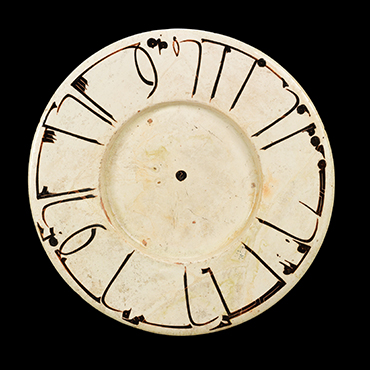While its origins lie in the French royal collections, particularly those of Louis XIII and Louis XIV, in AH 1207/1793 CE, the French revolutionary government opened the Musée du Louvre as a public art museum, to serve the needs of both artists and the public. The AH 1408/1988 CE addition of the Pyramid, designed by architect I.M. Pei, serves as a unified public entrance and brings light into the subterranean space below. Today, the Musée du Louvre pursues a regional and international cultural policy through the Louvre-Lens Museum, the Louvre Conservation Center and the Louvre Abu Dhabi (fruit of an unprecedented cooperation between France and the UAE).
The Department of Islamic Art began as an Islamic art section established within the Département des Objets d’art in AH 1310/1893 CE. A separate department was created in AH 1423/2003 CE, curating collections of some 18,000 objects. The core of the collection originates from the French royal collections and church treasuries, and comprises works of art from a broad sweep of cultural regions, spanning from Spain to India, and dating from the 1st to 13th centuries AH/7th to 19th centuries CE. The collections expanded greatly during the 13th century AH/19th century CE and early 14th century AH/early 20th century CE, when France was at the center of European interest in Eastern cultures and Paris became a hub for exhibitions and sales of Islamic art. In AH 1433/2012 CE, new galleries for Islamic art, displaying 3,000 works, were constructed in the Cour Visconti. The Musée du Louvre joins AlMadar with a new commission by Taiwanese artist Charwei Tsai (b. Taipei, AH 1400/1980 CE) that responds to a 4th-century AH/10th-century CE ceramic dish from Samarkand.
Dish with a radiating inscription
Inscribed
Tolerance is bitter at first, but in the end is sweeter than honey. Good health [to its owner].
The delicacy, quality of firing, purity of color and austerity of design of this dish exemplify what art historian Arthur Lane praised as “the essence of Islam undiluted.” Its design appears simple–a white surface inscribed with a concentric message in a dynamic Arabic script, with a central dot that both anchors and guides the eye. The inscription offers sage advice that embodies adab, or refined manners, reflecting the cultural value placed on literacy and decorum.
Such wares do not give up their inspiration or intentions easily. None are dated, few are signed, and fewer still bear dedicatory inscriptions. The dish’s angular form links it to silverwork traditions in Samarkand, a city situated between the rich silver mines of Zarafshan and Panjshir. Known as the first center of paper production in the Islamic lands, of which Samarkand was a major industry exporter. The visual connection between the dish and writing in black ink on white paper would not have been lost on its maker’s contemporaries. Pride in the region’s unique cultural and material resources—its silver, paper, and an appreciation for refined cultural expression—likely inspired such monumental pieces.
Samarkand, Uzbekistan, AH 360–90/975–1000 CE
Glazed earthenware with decoration in white and black clay slips, h. 5.3 × diam. 37.6 cm
Paris, Musée du Louvre, Département des Arts de l’Islam, don, Kann, Alphonse, AA 96

